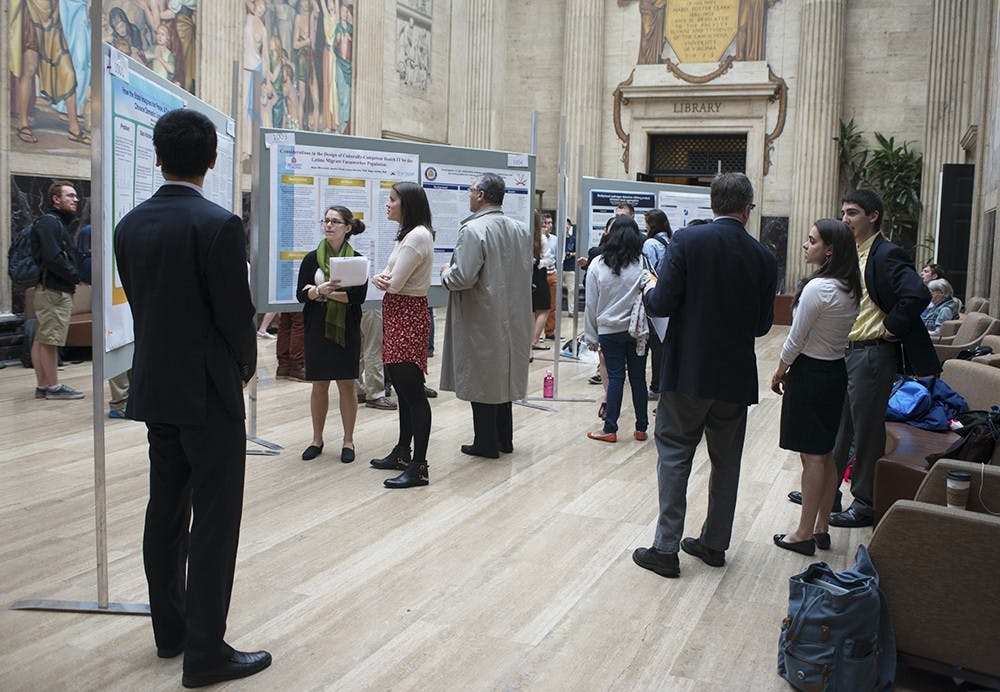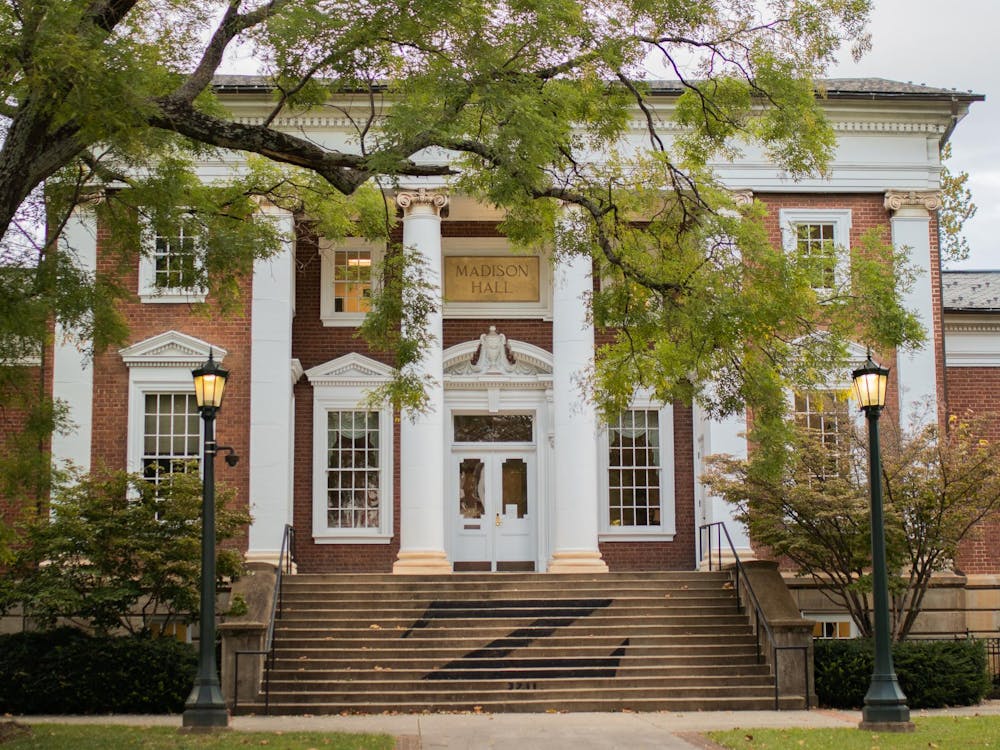The Undergraduate Research Network held its 14th annual research symposium in Clark Hall Thursday. Students displayed poster boards and discussed the research they conducted or are involved in with members of the University and surrounding community.
Symposium Chair Zach Hosseinipour, a second-year College student, said this year’s presentation format was different from that of previous years. Rather than students presenting their work one-by-one, they participated in a stationary presentation style in which onlookers could move between researchers’ projects and discuss their projects with them individually as well.
“Our goal was to make it more interactive — the format is more conducive to dialogue,” Hosseinipour said. “The main goal is to make research more accessible to the public. We want to motivate undergrads to get involved.”
Undergraduate Research Network Chair Usnish Majumdar, a third-year College student, listed what he said are the five steps of getting involved in research, beginning with becoming interested in a topic and ending with opportunities to share one’s research with others.
“Every person falls within one of the five steps,” he said.
Students had to apply to present their work in the symposium. In recruiting applicants, Hosseinipour said the main focus was on multidisciplinary projects. Research projects in the symposium center on topics ranging from 19th century American history to forensic science.
Third-year College student Caitlyn Holzknecht presented a project entitled “MEKi and BETi as a Novel Combinatorial Therapy for Pancreatic Adenocarcinoma.” Citing high mortality rates in pancreatic cancer patients, she emphasized the need for further research in this area. Her research, which involved testing a dual inhibitor on cancer cells to induce cell death, has been ongoing for eight months.
“There’s a lot to do,” she said. “We’re trying to move to mice trials [but] there’s about a $10,000 gap between what we have and what we need.”
Second-year College student Calder Hannan discussed his project “Progressive Metal Reconsidered Again — Metrical Dissonance and Consonance in the Music of Meshuggah,” in which he performed a technical musical analysis on the first thirty seconds of the song “I am Colossus” by Meshuggah.
“Not a lot of people do academic writing of metal,” he said. “It’s important because metal music is complex musically and socially.”
By demonstrating the musical intricacy of rhythm in the song by analyzing its rhythmic dissonance and consonance, he said he hoped to combat the stereotype that all metal listeners are “shirtless guys with long hair.”
“If it’s valid to do [musical analysis] of classical and jazz, it’s valid to do it here,” he said.
Hosseinipour and Majumdar also conduct their own research — Hosseinipour in break-repair of double stranded DNA and Majumdar in neuro-mosaicism. Hosseinipour said he became interested in research in high school and was immediately interested in helping involve others in research upon arrival at the University. He said the research symposium was one was to do that.
“I would say [the symposium is] a complete success,” he said. He said the quality of the projects was great and that attendance had “skyrocketed.”
An award ceremony will be held on April 12 in Hotel C at 5 p.m. Faculty will judge the projects and award over $1,000 in prizes.







